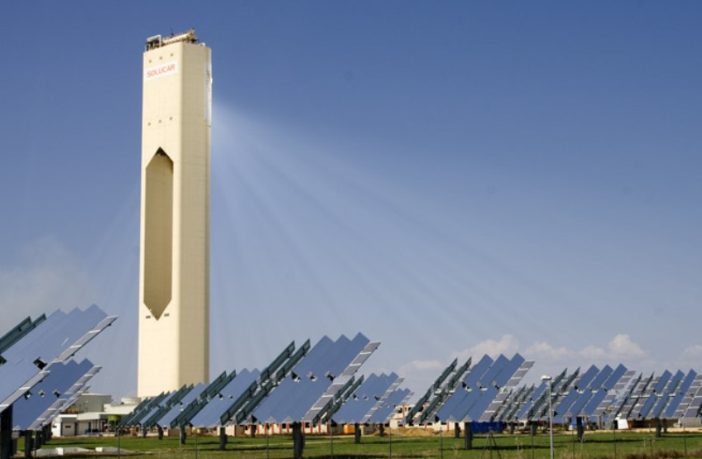Dutch Experiment: Lower Energy Prices When Solar Power Is Abundant

Table of Contents
How the Dutch Solar Energy Pricing Experiment Works
The core of the Dutch solar energy pricing experiment lies in its dynamic pricing mechanism. Energy prices decrease when solar energy production is high (peak solar generation), and increase during periods of lower solar output, reflecting the real-time availability of this renewable resource. This dynamic pricing model directly links energy costs to the intermittent nature of solar power.
Several companies and regions are participating in this pilot program, offering valuable real-world data on the efficacy of dynamic pricing. While specific names may vary as the experiment evolves, the general approach involves using smart meters to monitor energy consumption in real-time and adjusting prices accordingly.
The price fluctuations are significant, designed to provide strong incentives for consumers to shift their energy usage to periods of high solar production:
- Peak Solar Hours: A 50% reduction in price is typical during periods of peak solar generation, encouraging the use of energy-intensive appliances like washing machines and dryers.
- Diminishing Solar Production: A gradual increase in price occurs as solar production diminishes, mirroring the increased reliance on less sustainable energy sources.
- Time-of-Use Component: Many participants also incorporate a time-of-use component, further incentivizing off-peak energy consumption.
The technology underpinning this dynamic pricing model is crucial. Smart meters, advanced data analytics, and sophisticated grid management systems are essential for accurate, real-time monitoring and price adjustments, ensuring the smooth functioning of this innovative system.
Benefits of Dynamic Solar Energy Pricing
The potential benefits of this Dutch solar energy pricing experiment are far-reaching. The dynamic approach offers several compelling advantages:
- Increased Solar Energy Adoption: Lower energy costs during peak solar hours incentivize both consumers and businesses to invest in solar panel installations, accelerating the transition to renewable energy. This creates a positive feedback loop, increasing solar energy availability and further driving down prices.
- Improved Grid Stability: By encouraging energy consumption to align with solar production, the dynamic pricing model helps to reduce strain on the electricity grid, enhancing its overall stability and reliability. This is especially important as the share of intermittent renewable energy sources continues to grow.
- Reduced Reliance on Fossil Fuels: Higher solar energy usage directly translates into lower reliance on polluting fossil fuels, contributing significantly to greenhouse gas emission reduction targets and a cleaner energy future. This aligns perfectly with the Netherlands' broader commitment to environmental sustainability.
Consumers also stand to benefit significantly:
- Lower Electricity Bills: Households can enjoy significantly lower electricity bills during sunny periods, potentially saving substantial amounts of money annually.
- Increased Energy Independence: By adopting solar power, consumers become less reliant on centralized energy providers, contributing to greater energy security and resilience.
- Contribution to Environmental Sustainability: Participation in the program allows consumers to actively contribute to environmental sustainability and a cleaner energy future.
Challenges and Potential Drawbacks of the Dutch Experiment
Despite its potential benefits, the Dutch solar energy pricing experiment also faces several challenges and potential drawbacks:
- Impact on Low-Income Households: The dynamic pricing model could disproportionately affect low-income households, potentially exacerbating energy poverty. Careful consideration of social equity is crucial to ensure fair and equitable access to affordable energy.
- Technological Challenges: Ensuring accurate and reliable real-time pricing requires robust technology infrastructure and sophisticated data analytics capabilities. Any technological failures or inaccuracies could undermine the effectiveness of the system.
- Public Acceptance and Understanding: Successful implementation hinges on public acceptance and understanding of the dynamic pricing model. Clear communication and education are crucial to build trust and overcome potential resistance.
Addressing these challenges requires a multifaceted approach:
- Clear Communication and Education: Transparent and accessible information about the program's mechanics and benefits is crucial to garner public support.
- Potential for Market Manipulation: Mechanisms to prevent market manipulation and price volatility must be in place to maintain a fair and transparent energy market.
- Effective Regulatory Oversight: Strong regulatory oversight is needed to ensure the fair and efficient operation of the dynamic pricing system and protect consumer interests.
The Future of Dynamic Solar Energy Pricing in the Netherlands and Beyond
The scalability of the Dutch solar energy pricing experiment and its potential for wider adoption in the Netherlands and internationally are significant. The lessons learned from this pilot project will inform future energy policies and strategies, shaping the way renewable energy is integrated into national grids.
Further development of dynamic pricing models will likely involve:
- Expanded Partnerships and Collaborations: Collaboration between energy providers, technology companies, and policymakers is vital to further refine and optimize dynamic pricing systems.
- Smart Grid Integration: The seamless integration of dynamic pricing into smart grids and smart home technologies will be crucial for maximizing its effectiveness. Smart grid technologies enable better monitoring and control of energy flow, allowing for a more precise response to variations in solar power generation.
The success of the Dutch experiment holds valuable lessons for other countries seeking to increase their reliance on renewable energy sources and build a sustainable energy future. By carefully addressing the challenges and capitalizing on the benefits, dynamic solar energy pricing could become a key component of a cleaner, more efficient, and equitable energy system globally.
Conclusion
The Dutch experiment with dynamic solar energy pricing represents a significant step towards a more sustainable and efficient energy system. While challenges remain, the potential benefits – including reduced energy costs, increased solar adoption, and a decreased reliance on fossil fuels – are substantial. This innovative approach offers valuable insights for other countries seeking to integrate renewable energy sources and create a cleaner energy future. Learn more about the Dutch solar energy pricing experiment and how you can participate in similar initiatives in your region to contribute to a greener tomorrow. The future of energy pricing may well depend on similar innovative approaches to integrating renewable sources like solar power.

Featured Posts
-
 Stilniy Obraz Emmi Stoun U Minispidnitsi Na Premiyi Shou Biznesu
May 04, 2025
Stilniy Obraz Emmi Stoun U Minispidnitsi Na Premiyi Shou Biznesu
May 04, 2025 -
 Christian Horner On Max Verstappen Becoming A Dad A Pithy Comment
May 04, 2025
Christian Horner On Max Verstappen Becoming A Dad A Pithy Comment
May 04, 2025 -
 Last Hurrah Former Ufc Champ Returns After Year Long Hiatus
May 04, 2025
Last Hurrah Former Ufc Champ Returns After Year Long Hiatus
May 04, 2025 -
 Gillian Robertson Predicts Marina Rodriguez Ufc Des Moines Finish
May 04, 2025
Gillian Robertson Predicts Marina Rodriguez Ufc Des Moines Finish
May 04, 2025 -
 Gibonni Koncert Pula Karte Cijena I Lokacija
May 04, 2025
Gibonni Koncert Pula Karte Cijena I Lokacija
May 04, 2025
